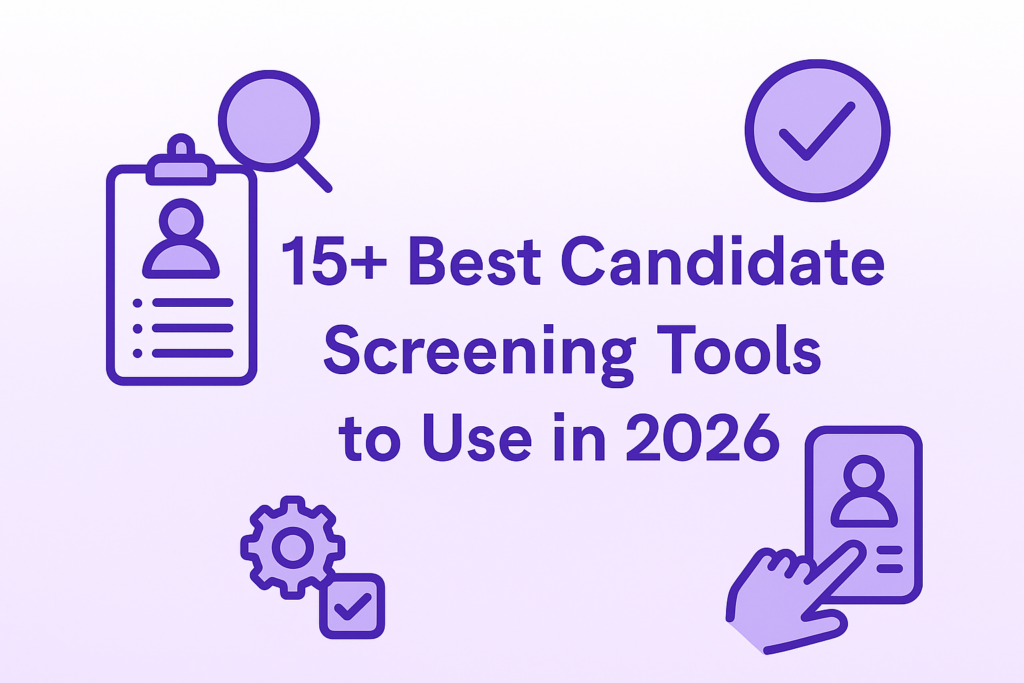What is performance management?
Performance management is the continuous cooperative effort with employees and managers to plan, monitor, and improve performance. It emphasizes goal-setting, regular feedback, and development conversations that follow the strategic direction of an organization—rather than a one-time discussion at the end of each year about how well an employee has performed.
When executed properly, it transforms performance into an active, real‑time process.
What are the benefits of performance management?
The double-edged sword of performance management In fact, this strategy has an enduring effect on employers just as it does for the employees.
The best way to describe both characteristics to your employers, as organizations A glimpse of how performance management help HRs and employees –
Benefits for HR Teams
- Access to Actionable Data: Performance systems provide analytics on-the-go on engagement, goal-tracking, and employee growth. These metrics can be used by HR for promotion, succession planning, and skill-gap analysis.
- Reduced Administrative Load & Faster Execution: Automated review cycles result in quicker deployment of goals and evaluations. In the case of a very large organization, performance targets were up and running for a wide swath of people in just days, and structured evaluations moved from months-long cycles to weeks.
- Retention Gains from Early Intervention: Companies have an average churn rate of about 17%, and it could go up to as high as 25% in some sectors. This will allow HR to raise red flags for disengagement before employees leave, and managers can intervene with these employees using the performance tool. Studies in the retail sector of Hyderabad also substantiate that financial as well as intrinsic feedback enhances loyalty essentially.
Benefits for Employees
- Clarity and Alignment: Co-created SMART goals or OKRs that articulate what success looks like for the business, in turn supporting employees to know what is expected of them. How to get purpose in work—an increase in engagement, especially from a younger workforce
- Timely Feedback & Recognition: Structured check-ins are conducted on a regular basis along with timely recognition and feedback so that employees can take actions based on it early. Chinese workforce data shows that faster manager interaction leads to less frustration and more positivity. When a company exchanged traditional annual reviews with weekly manager-employee check-ins, it saw revenue cut in half.
- Focused Growth & Career Pathing: When implementing regular feedback, employees can determine the skills they need to develop early on and know where they are in line with any learning being done. Offering career planning reduces an employee’s probability of departure within 12–18 months by between 29 and 40 percent.
- Trust and Psychological Safety: While one-on-ones help build trust between employees and managers. IT studies show that
- Engagement can help overcome the negative impact.
- Supportive HR practices, like open communication &
- Training cuts turnover intention
How to implement performance management in organizations?
Using a transformational approach to shared services will alleviate the burden of high HR attrition rates, generational diversity, and evolving workplace expectations, but in the corporate brand context, it is easier said than done, where respect for hierarchy comes before anything else.
Here’s a comprehensive guide to successfully implementing performance management:
- Define Clear Objectives and Align with Business Strategy
Define what you hope to accomplish prior to going live with a performance management program. Do you want to drive employee engagement, decrease attrition, speed leadership development, or increase productivity? Link them directly to your business strategy.
E.g., in the IT Services industry, where innovation and agility are crucial, your focus should be on incorporating continuous feedback and agile goal setting. If retention is high in turnover industries such as retail or hospitality, focus on coaching and development conversations.
- Involve Leadership and Communicate the Vision Clearly
Leadership buy-in is key given the hierarchy in its organizational structures. Performance management—senior leaders must be champions of the system and grow practices that embed it across their organization.
Communication is key to transform the mindsets of employees and their fear because when everyone knows why the new system works for them equally and basically, then trust ultimately increases, and skepticism appears to be nil. Utilize town halls, internal newsletters, and manager forums for reinforcing the purpose and anticipated outcomes.
- Design Measurable, Realistic, and Aligned Goals
Take advantage of goal-setting frameworks like SMART (Specific, Measurable, Achievable, Relevant, Time-bound) or OKRs (Objectives and Key Results) to craft concrete goals. Empower employees to build their own goals so they have more ownership of and investment in the outcome.
So automating something your sales team member has as a quarterly objective (increase client retention by 10%, which involves weekly check-ins with clients) is orthogonal to the checklist. Create a Synergy: Align individual goals with department and organisational priorities
Punch in some combinations, and voila!
- Select and Implement the Right Technology
Opt for a user-friendly, mobile-responsive performance management platform that promotes real-time feedback, goal setting, and performance data. In the recent backdrop, as mobile access is more preferred, ensure that the staff can interact with the system on smartphones.
It also had to be localizable—able to handle regional languages and the fact that different cultures have mixed feelings about feedback.

- Train Managers as Coaches and Facilitators
Most companies are characterized by a typical managerial culture where managers are more focused on time completion than on coaching. Provide them with some umbrella training on active listening, making impartial observations, aligning goals, and improving employee development.
Managers can also rehearse delivering their feedback, and the difficult conversations they have to do in the role-play scenarios and workshops centered on delivering constructive feedback or one-on-one meetings matter as well. This change from boss to coach is essential if the system is to function.
- Encourage Frequent and Structured Check-ins
Instead of having an old-fashioned annual review, frequently check in—ideally monthly or, at the very least, quarterly—where managers and employees give each other feedback on how they are performing against the agreed-upon goals, what problems they have solved, and the development needs that they have changed.
Muller granted that these regular chats help establish a transparent environment, and thus they reduce the performance stress. Use these sessions to energize, change objectives if needed, and find a way around the obstacles.
The same conversation in corporate sectors where a manager is needed to identify such early warning signs of burnout and thus render them assistance so that they are no longer an issue, as the work-life balance can be hard to accomplish.
- Embed Learning and Development into the Process
A performance discussion is a talk between a worker and a manager about work. The conversation is usually used for identifying skills gaps and development plans created with training needs that are recognized. The discussion needs to drive employees to set learning goals along with their performance objectives.
A software engineer can be an example of one who may be learning a new programming language for their growth plan. For instance, they can be invited either to the internal educational program or to the external basic workshops/e-learning platform. When you think of development as a never-ending journey, it definitely isn’t a one-time event.
- Use Data and Analytics to Drive Decisions
Utilize the data gathered through performance management systems to find out patterns, top performers, and areas that require improvement. In organizations, where HR practices based on data are growing rapidly, such insight is like a gold mine for workforce planning, succession management, and interventions that are specific.
To give an example, if the workers in one department are found to be disengaged through a survey, HR can come up with targeted engagement programs that are more interactive and interesting.
- Solicit Feedback and Iterate the Process
Performance management must change depending on the feedback of users. Find out regularly through surveys of employees and managers what parts of the system are functioning and what are not.
The fact that a brand’s workforce is multicultural means that uniform solutions seldom are effective—be open to customizing procedures or supplying more help in some teams or places. Employ feedback loops to improve communication, training, and technology to guarantee that they are used and effective.
- Celebrate Success and Recognise Contributions
Recognition motivates employees and positively reinforces their behaviors. Take some steps to get formal and informal recognition included into your performance management system.
Give recognition publicly as well as privately for milestones and outstanding and continuous performance. Workplaces traditionally place great importance on acknowledgement, so a little bit of appreciation at the right time can go a long way in improving employee morale and loyalty.
Conclusion
Performance management has morphed into a perpetual strategic endeavor fostering lucidity growth and congruous alignment quite effectively nowadays, apparently. It helps employees stay engaged in a fast-evolving work environment while developing new skills through somewhat clear career trajectories.
Organizations see improved retention and build future-ready teams rapidly while supporting decisions backed by data. Performance management strengthens trust, accountability, and culture remarkably well when done effectively in a rather robust manner, obviously.
It empowers people profoundly and aligns their efforts strategically with business goals, creating lasting value for individuals and organizations simultaneously.






